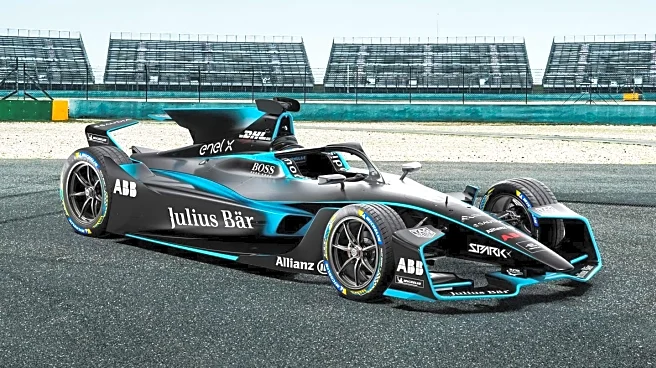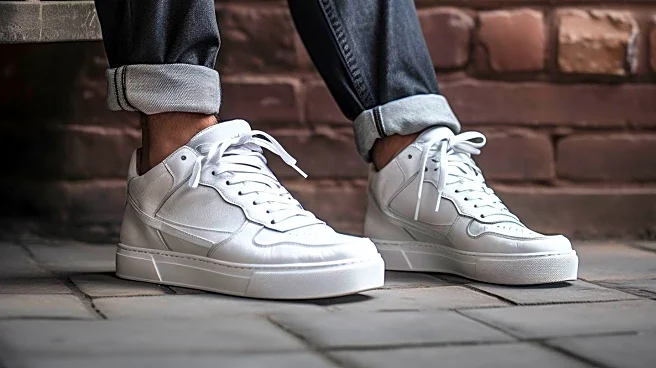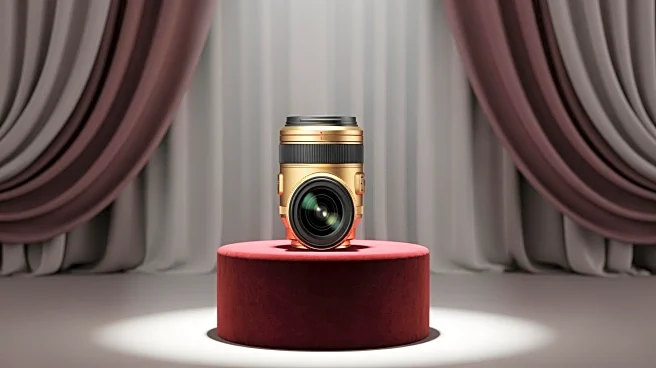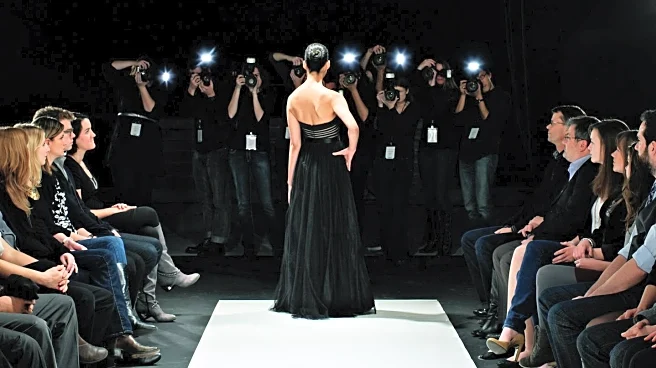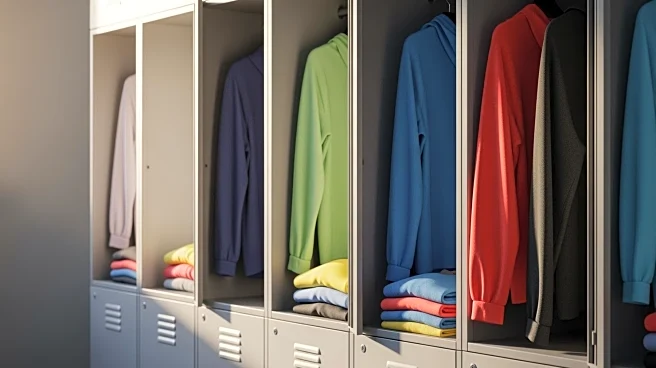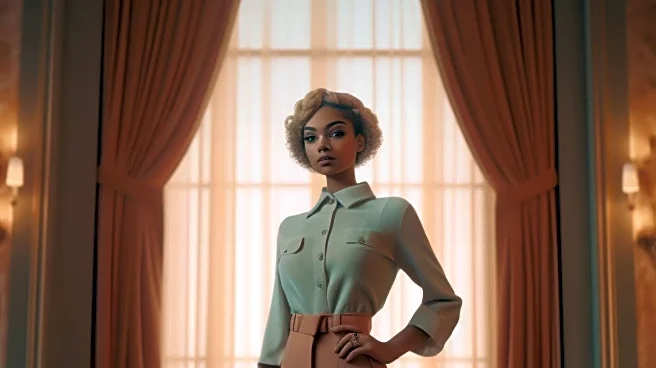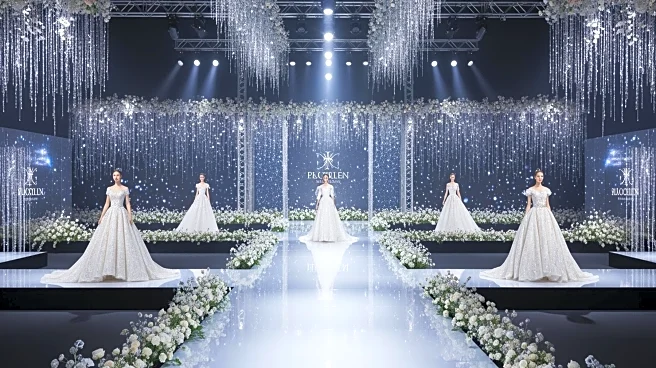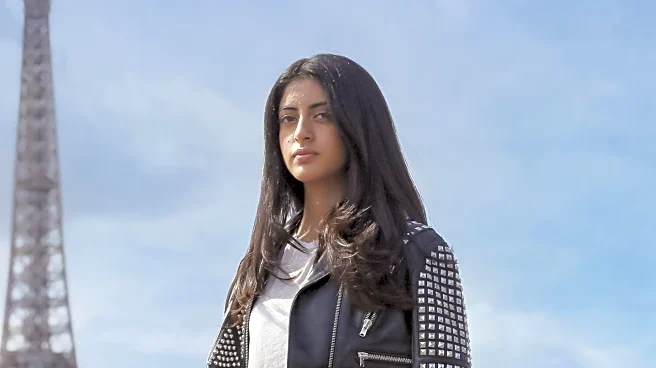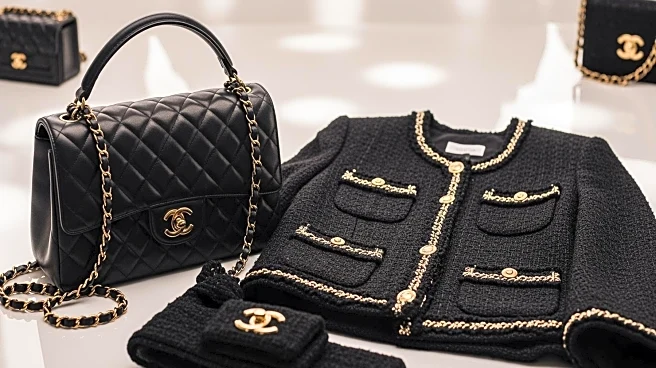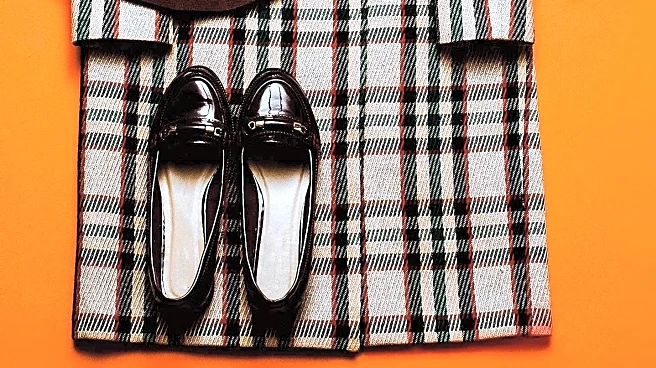What's Happening?
Gabriela Silva, a Gen Z professional thrifter from Burbank, California, has gained significant attention online after trying on a pair of Y2K low-rise jeans. Her video, showcasing the jeans' extremely
low waistline, has gone viral, amassing over 436,000 likes and 4.2 million views. Silva expressed surprise at the discomfort and style of the jeans, which contrast sharply with her usual preference for mom jeans and vintage fashion inspired by Ms. Frizzle from The Magic School Bus. Silva's exploration of this fashion trend highlights the cyclical nature of fashion, with Gen Z showing renewed interest in styles from the 2000s.
Why It's Important?
The resurgence of Y2K fashion among Gen Z reflects broader cultural trends where younger generations are revisiting and reinterpreting past styles. This phenomenon can influence the fashion industry, driving demand for retro designs and potentially impacting retail strategies. As Gen Z continues to explore and adopt elements from previous decades, fashion brands may need to adapt by offering products that cater to this nostalgic interest. Silva's viral experience underscores the power of social media in shaping fashion trends and consumer behavior, as well as the potential for individuals to influence style narratives.
What's Next?
Silva's experience may encourage other Gen Z individuals to explore Y2K fashion, potentially leading to increased demand for vintage and retro clothing. Fashion brands might respond by expanding their offerings to include more Y2K-inspired designs. Additionally, Silva's aspiration to start a fashion-based nonprofit could inspire others to use fashion as a means of empowerment and self-expression. As the trend gains momentum, it could spark discussions about the cultural significance of fashion cycles and the role of social media in reviving past styles.
Beyond the Headlines
The revival of Y2K fashion among Gen Z could have deeper implications for cultural identity and generational connections. As younger individuals embrace styles from the past, it may foster a sense of continuity and shared experiences across generations. This trend also highlights the evolving nature of fashion as a form of personal expression, where individuals can blend elements from different eras to create unique identities. The viral nature of Silva's experience demonstrates the impact of digital platforms in amplifying individual voices and shaping cultural conversations.
